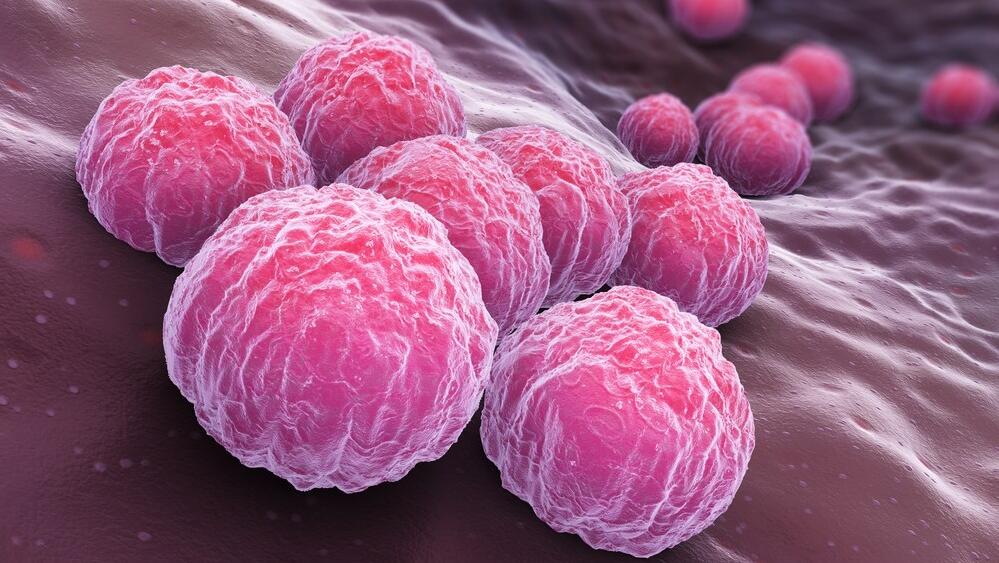Israel has seen a dramatic increase in the number of people suffering from complications related to sexually-transmitted diseases, medical professionals reported.
Among the frequently-encountered complications are brain and neurological issues, arthritis, blood infections, inflammation of the liver and even infertility.
The rate of sexually transmitted infections in Israel has been on the rise for years, and has been emphasized as the cause for concern by medical professionals, who fear that STD-related bacteria could become resistant to antibiotics due to growing infection rates.
While HIV infections in Israel have somewhat stabilized at around 400 new cases per year - mainly due the use of the PrEP drug, which prevents infection - a spike has been recorded in other common venereal diseases, chief among them are chlamydia, gonorrhea and syphilis.
Tel Aviv’s Ichilov Medical Center - which recently opened the country’s first clinic dedicated to treating STD complications - has reported an increase in the average number of monthly patients suffering from various STD-related problems.
“Out of thousands of cases of sexually transmitted diseases a month, we see dozens of people suffering from complications,” said Dr. David Shasha, a specialist in infectious diseases and director of Ichilov’s dedicated STD clinic.
"Some of the cases are severe and include neurological complications resulting from syphilis or herpes, which sometimes end in disability and brain damage,” said Shasha, who adds that “this is a nationwide phenomenon".
The number of chlamydia infection have increased by dozens of percent over the past few years, as did cases of chlamydia-related complications, making the STD the most common in Israel.
Chlamydia causes pelvic pain and inflammation, bleeding, pain during sexual intercourse, infections in the reproductive organs, and even infertility. But patients often do not exhibit symptoms, thus infecting their sexual partners if a condom is not used.
Another STD which has seen a spike in Israel is gonorrhea, which can infect both the genitals and the throat.
The bacteria that causes the disease, Neisseria Gonorrhoeae, is transmitted during sexual intercourse, but women can also infect their babies during childbirth, causing conjunctivitis in newborns.
In 30% to 60% of women no discernible symptoms appear in case of an infection. The rest would experience vaginal discharge, pain while urinating, bleeding between menstrual cycles or after sexual intercourse. A clinical examination could show inflammation of the cervix and a discharge of pus.
Men with gonorrhea could have an inflammation of the urethra causing pain during urination and secretion of pus. In serious cases, the disease could inflame the pelvis causing stomach pain, bleeding, vomiting, and fever. The bacteria could also infect the testicles and the prostate gland.
The most worrying venereal disease of all, however, is syphilis, which has also seen an increase in Israel in recent years.
Syphilis, which can spread via vaginal, anal or oral sex, causes many complications that are divided into three stages. In the first stage (ten to 90 days after infection) a single lesion appears where the bacteria entered the body.
In the second stage, a rash appears on the skin and the mucous membranes. The rash is usually not itchy and may appear where the initial lesion has healed. The rash appears as brown-red spots on the hands and feet, or elsewhere in the body.
In addition to a rash, symptoms may include fever, swollen lymph nodes, sore throat, hair loss, headaches, weight loss, muscle aches and fatigue.
The third stage of the disease occurs in about 30% of untreated patients. This stage of the disease occurs when the lesions disappear. The bacterium can cause damage to various organs including the nervous system, eyes, heart, blood vessels, liver, bones and joints - and even the brain.
Organ degradation may also occur years after infection, and will in some cases manifest itself in paralysis, loss of sensation, blindness and even dementia.




